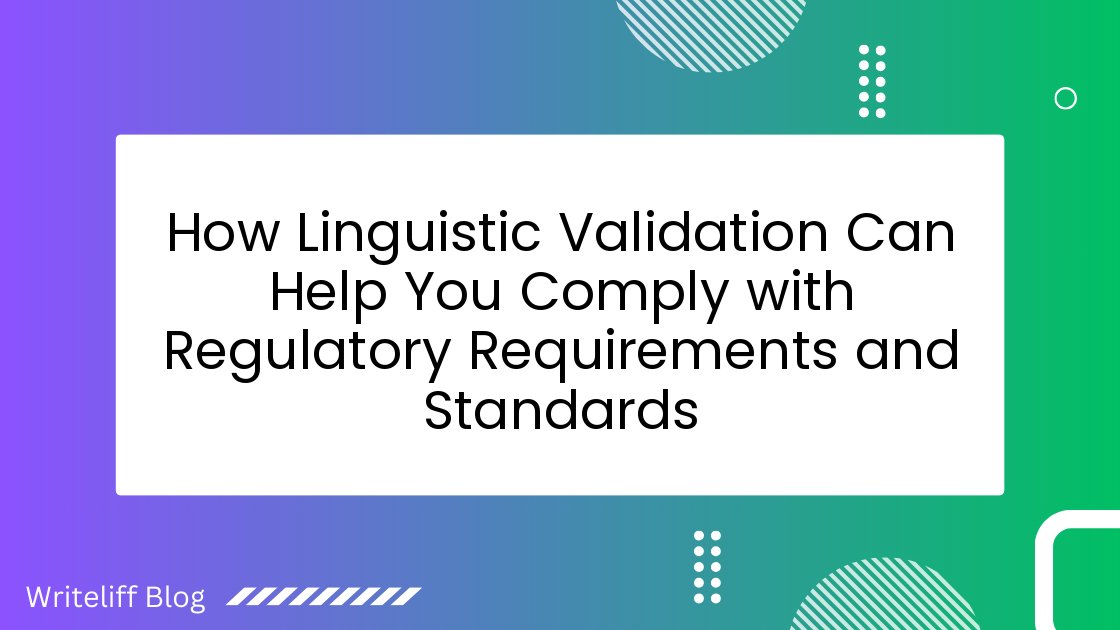How Linguistic Validation Can Help You Comply with Regulatory Requirements and Standards

As businesses expand globally, they face the challenge of complying with regulatory requirements and standards in different countries. One of the most critical aspects of compliance is ensuring that all documents and communications are accurately translated into the local language. This is where a professional translation service can help. In this blog post, we will explore how linguistic validation can help you comply with regulatory requirements and standards.
What is Linguistic Validation?
Linguistic validation is the process of ensuring that a translated document accurately conveys the intended meaning of the original text. It involves a rigorous process of translation, back-translation, and reconciliation to ensure that the translated document is accurate, culturally appropriate, and understandable to the target audience.
Why is Linguistic Validation Important for Compliance?
Linguistic validation is critical for compliance because it ensures that all documents and communications are accurately translated into the local language. This is particularly important for businesses operating in regulated industries such as healthcare, pharmaceuticals, and finance, where inaccurate translations can have serious consequences.
Examples of Regulatory Requirements and Standards
- ISO 17100: This standard specifies requirements for translation services and is designed to ensure that translations are of high quality and meet the needs of the target audience.
- European Medicines Agency (EMA): The EMA requires that all documents related to clinical trials be translated into the local language of the participating countries.
- Food and Drug Administration (FDA): The FDA requires that all drug labeling and packaging be translated into the local language of the target market.
The Benefits of Linguistic Validation
Linguistic validation offers several benefits for businesses, including:
- Improved accuracy: Linguistic validation ensures that translations are accurate and convey the intended meaning of the original text.
- Increased compliance: Linguistic validation helps businesses comply with regulatory requirements and standards in different countries.
- Enhanced customer satisfaction: Accurate translations improve customer satisfaction by ensuring that communications are clear and understandable.
- Reduced risk: Accurate translations reduce the risk of errors and misunderstandings that can lead to legal or financial consequences.
The Linguistic Validation Process
The linguistic validation process typically involves the following steps:
- Translation: The original document is translated into the target language by a professional translator.
- Back-translation: A second professional translator translates the translated document back into the original language.
- Reconciliation: The original document and the back-translated document are compared to identify any discrepancies or errors.
- Review: The reconciled document is reviewed by a third professional translator to ensure accuracy and cultural appropriateness.
Conclusion
Linguistic validation is critical for compliance in regulated industries and can help businesses ensure that all documents and communications are accurately translated into the local language. By working with a professional translation service, businesses can benefit from improved accuracy, increased compliance, enhanced customer satisfaction, and reduced risk.
